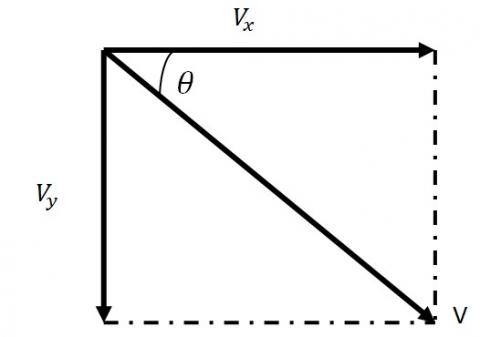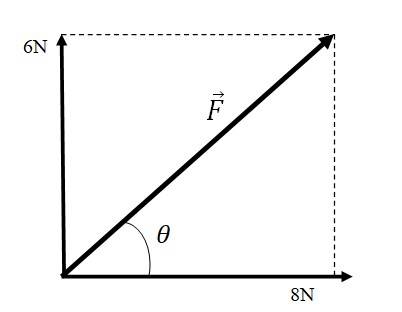Class 11th
Get insights from 8k questions on Class 11th, answered by students, alumni, and experts. You may also ask and answer any question you like about Class 11th
Follow Ask QuestionQuestions
Discussions
Active Users
Followers
New answer posted
6 months agoContributor-Level 10


Mass of the body A, m1 = 10 kg, mass of the body B, m2 = 20 kg, Horizontal force = 600 N
Total mass of the system, m =m1 + m2 = 30 kg
From the relation F = ma, we get a = 600 / 30 = 20 m/s2
(i) When the force is applied on A
F – T = m1a or T = F - m1a = 600 – 10 = 400 N
(ii) When the force is applied on B
F-T = m2 a, T = F - m2 a = 600 – 20 N
New answer posted
6 months agoContributor-Level 10
(a) For t<0, the distance covered by the particle x is zero. Hence force on the particle is zero. For t>4s, the particle is moving at a constant distance, so the force will be zero. For 0
(b) Impulse is given by the equation, Impulse = total change of momentum. At t = 0, u = 0, v = distance / time = ¾ = 0.75 m/s
Impulse = 4 (0.75-0) kg-m/s = 3 kg-m/s
Impulse at t=4, u = 0.75, v = 0, Impulse = 4 (0-0.75) = -3 kgm/s
New answer posted
6 months agoContributor-Level 10
The mass of the man, m = 70 kg, g = 10 m/s2, Let W be the reading on the weighing scale
(a) When the lift is moving upward with uniform speed of 10 m/s, the acceleration = 0
The value of W is given by W = mg = 70 = 700 N
(b) The lift is moving downward with acceleration, a = 5m/s2 Using Newton's 2nd law of motion, the equation of motion can be written as W + MA = mg or W = m (g-a)
= 70 (10-5) = 350 N
(c) The lift is moving upward with acceleration of a =5m/s2 . Using Newton's 2nd law
W = m (g+a) = 70 = 1050 N
(d) If the lift mechanism fails, the lift will come down with acceleration due
New answer posted
6 months agoContributor-Level 10
(a) When the bob is at extreme position, the velocity at that point is zero. If the string is cut at that location, the bob will fall because of its own weight
(b) At the mean position, if the string is cut, due to horizontal velocity, the bob will act like a projectile and will fall on the ground, following a parabolic path.
New answer posted
6 months agoContributor-Level 10
The acceleration of the truck, a = 2 m/s2, t = 10 s, Initial velocity, u = 0, from the equation v = u + at, we get v = 2 = 20 m/s
At time t = 11 s, the horizontal component of the velocity Vx remains unchanged due to no air resistance. Hence Vx = 20 m/s
The vertical component of the velocity Vy is expressed as
Vy = u + t
Here t =11-10 = 1 s, 10 m/s2, u = 0

Vy = 10 m/s
The resultant velocity V is given by V = ( + )1/2 = 22.36 m/s
=Vy/Vx=10/20, 26.57 w.r.t. horizontal
New answer posted
6 months agoContributor-Level 10
Given, the mass of the body = 0.4 kg, Initial speed = 10m/s, Initial force, Retarding force, F = - 8 N
(a) At t = -5s, Due to constant speed, the acceleration of the body = 0
From the relation, s = ut + (1/2)at2, we get
s = 10 + 0 = -50 m
At t = 25s, The acceleration of the body due to retarding force, from the relation F = ma, a = -8/0.4 m/s2 = - 20 m/s2
From the relation, s = ut + at2, , we get
s = 10 + = -6000m
At t = 100s
For the first 30 s, while the body moves towards North, the opposite force of 8 N acts on it and from the relation s = ut + (1/2)at2, , we get
S30 = 10 30 +&nb
New answer posted
6 months agoContributor-Level 10
The mass of the rocket, m = 20000 kg
When the rocket is fired, gravitational acceleration tries to pull it down. Hence the effective acceleration on the rocket = rocket acceleration + gravitational acceleration
The acceleration, a = 5 m/s2 , gravitational acceleration = 10 m/s2
Total acceleration = 5 +10 = 15 m/s2
Thrust force = 20000 15 N = 3 .0 N
New answer posted
6 months agoContributor-Level 10
The initial speed of 3 wheeler, u = 36 km/h = 10 m/s
The final velocity of the 3 wheeler, v = 0
The time t = 4 s
From the relation, v = u-at, we get, a = u/t = 10/4 m/s2 = 2.5 m/s2
The total mass acting on the 3 wheeler, m = mass of the 3 wheeler + mass of the driver = 400 +65 kg = 465 kg
The average retarding force F is given by F = MA = 465 2.5 N = 1162.5 N = 1.2 N
New answer posted
6 months agoContributor-Level 10

The resultant force F of the two forces 6N and 8N is given by,
F = = 10 N
Acceleration is given by F = ma, a = F/m = 10/5 m/s2 = 2 m/s2
= 6/8, = 36.86
New answer posted
6 months agoContributor-Level 10
Initial speed, u = 2.0 m/s, the final speed v = 3.5 m/s, the time t = 25 s
From the relation v = u + at, we get acceleration a = (v-u)/t = (3.5 – 2.0 )/ 25s = 0.06 m/s2
The force F = ma, F = 3 0.06 N = 0.18 N
Taking an Exam? Selecting a College?
Get authentic answers from experts, students and alumni that you won't find anywhere else
Sign Up on ShikshaOn Shiksha, get access to
- 65k Colleges
- 1.2k Exams
- 679k Reviews
- 1800k Answers

